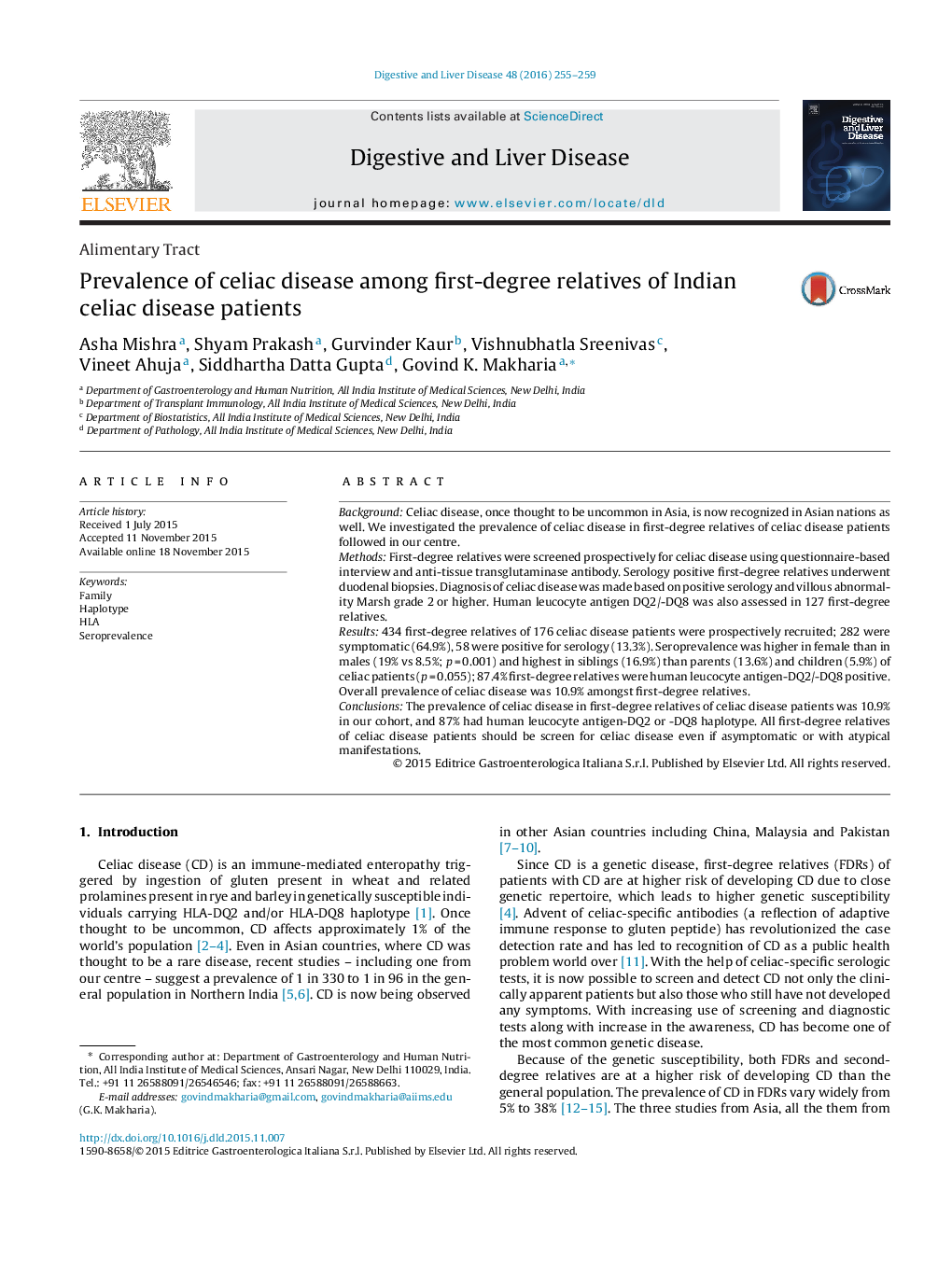| Article ID | Journal | Published Year | Pages | File Type |
|---|---|---|---|---|
| 6087985 | Digestive and Liver Disease | 2016 | 5 Pages |
BackgroundCeliac disease, once thought to be uncommon in Asia, is now recognized in Asian nations as well. We investigated the prevalence of celiac disease in first-degree relatives of celiac disease patients followed in our centre.MethodsFirst-degree relatives were screened prospectively for celiac disease using questionnaire-based interview and anti-tissue transglutaminase antibody. Serology positive first-degree relatives underwent duodenal biopsies. Diagnosis of celiac disease was made based on positive serology and villous abnormality Marsh grade 2 or higher. Human leucocyte antigen DQ2/-DQ8 was also assessed in 127 first-degree relatives.Results434 first-degree relatives of 176 celiac disease patients were prospectively recruited; 282 were symptomatic (64.9%), 58 were positive for serology (13.3%). Seroprevalence was higher in female than in males (19% vs 8.5%; p = 0.001) and highest in siblings (16.9%) than parents (13.6%) and children (5.9%) of celiac patients (p = 0.055); 87.4% first-degree relatives were human leucocyte antigen-DQ2/-DQ8 positive. Overall prevalence of celiac disease was 10.9% amongst first-degree relatives.ConclusionsThe prevalence of celiac disease in first-degree relatives of celiac disease patients was 10.9% in our cohort, and 87% had human leucocyte antigen-DQ2 or -DQ8 haplotype. All first-degree relatives of celiac disease patients should be screen for celiac disease even if asymptomatic or with atypical manifestations.
